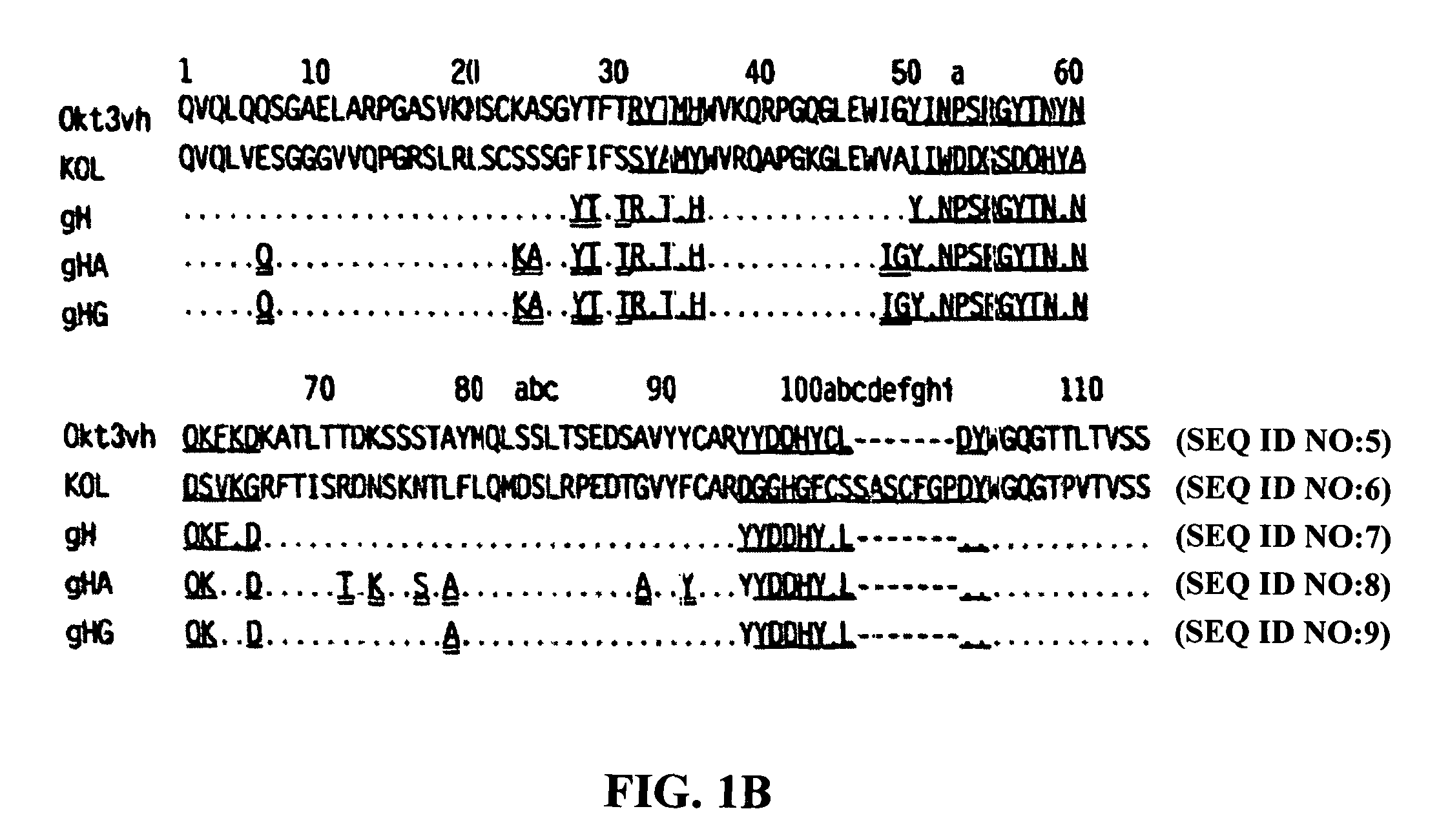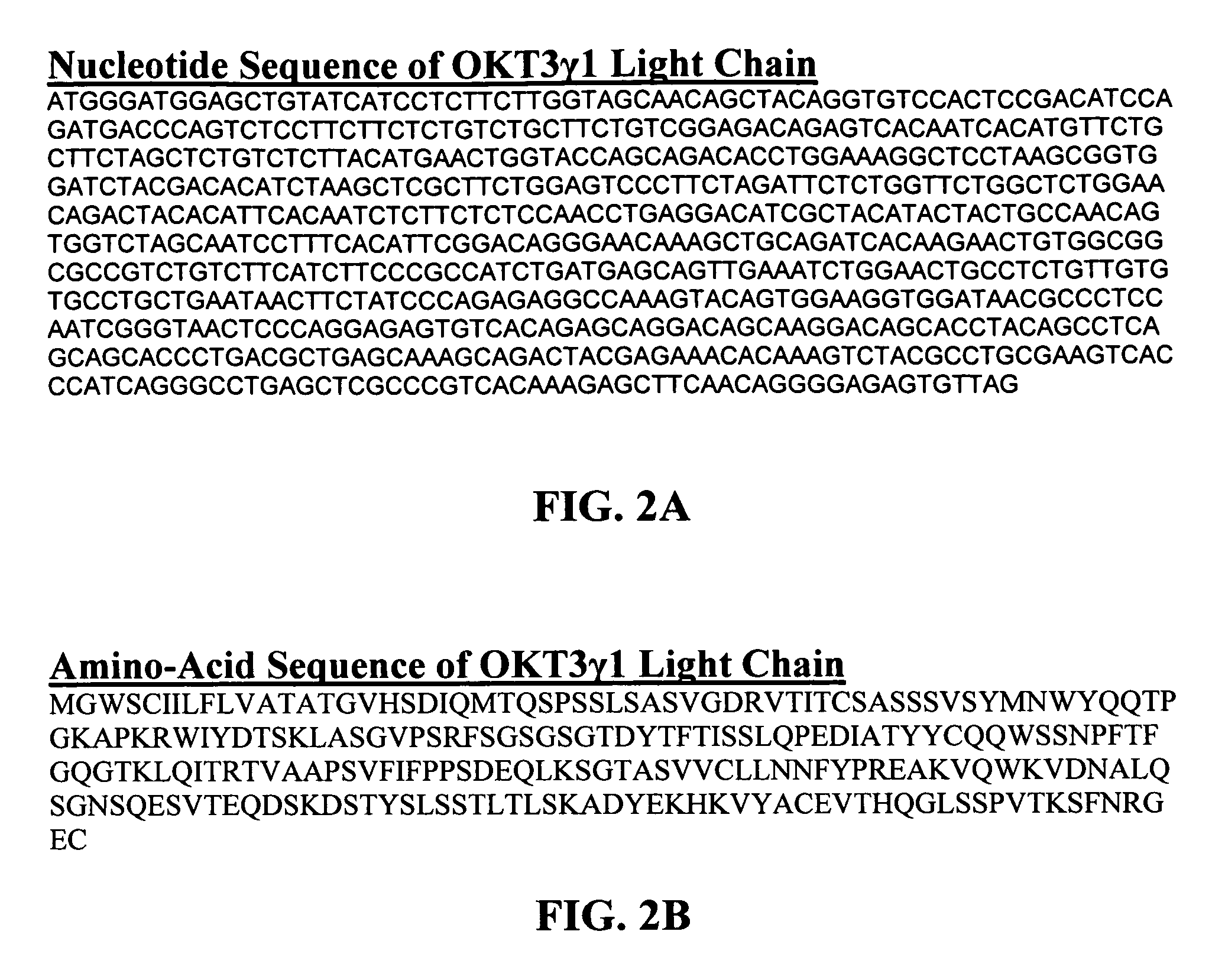Methods for the treatment of autoimmune disorders using immunosuppressive monoclonal antibodies with reduced toxicity
a monoclonal antibody and immunosuppressive technology, applied in the field of autoimmune disorders using immunosuppressive monoclonal antibodies with reduced toxicity, can solve the problems of more serious systemic complications, more at-risk patients for developing opportunistic infections, and minor infections can rapidly become of serious concern, so as to reduce the toxicity of the associated agent, improve the effect of the agent, and reduce the efficacy of the agen
- Summary
- Abstract
- Description
- Claims
- Application Information
AI Technical Summary
Benefits of technology
Problems solved by technology
Method used
Image
Examples
Embodiment Construction
[0089]The present invention provides for monoclonal antibodies directed against the CD3 complex associated with the human TcR and methods of administration and / or use thereof for the treatment of autoimmune disorders. In particular embodiments, the antibody binds to the epsilon subunit of the CD3 complex. The methods of the invention may be used with any anti-CD3 antibody presented herein or known in the art, e.g. OKT3, ChAglyCD3 (TRX4™), HUM291 (visilizumab; Nuvion™), UCHT1, Leu4, 500A2, CLB-T3 / 3, BMA030, BH11, T2 / 30, AG3, BC3, SP34, RIV-9, UCHT1, 64.1, M291 and YTH 12.5, and variations or derivatives thereof. In one embodiment of the invention the antibody is OKT3, preferably humanized versions of OKT3 or an antibody that competes for binding with OKT3. In another embodiment, the antibody is humanized OKT3, which has been modified at one or more amino acid residues as described herein to exhibit reduced T cell activation and / or FcR binding when compared to a non-modified humanized...
PUM
 Login to View More
Login to View More Abstract
Description
Claims
Application Information
 Login to View More
Login to View More - R&D
- Intellectual Property
- Life Sciences
- Materials
- Tech Scout
- Unparalleled Data Quality
- Higher Quality Content
- 60% Fewer Hallucinations
Browse by: Latest US Patents, China's latest patents, Technical Efficacy Thesaurus, Application Domain, Technology Topic, Popular Technical Reports.
© 2025 PatSnap. All rights reserved.Legal|Privacy policy|Modern Slavery Act Transparency Statement|Sitemap|About US| Contact US: help@patsnap.com



